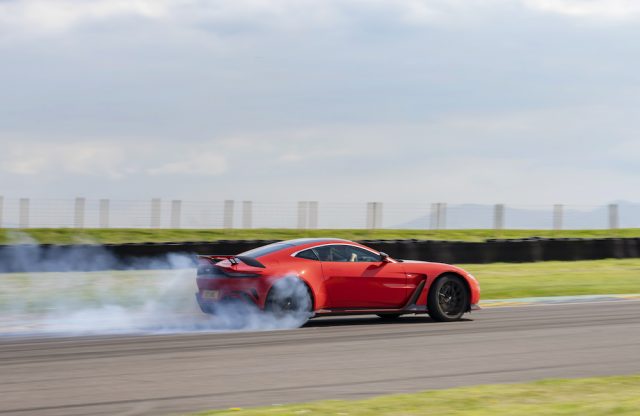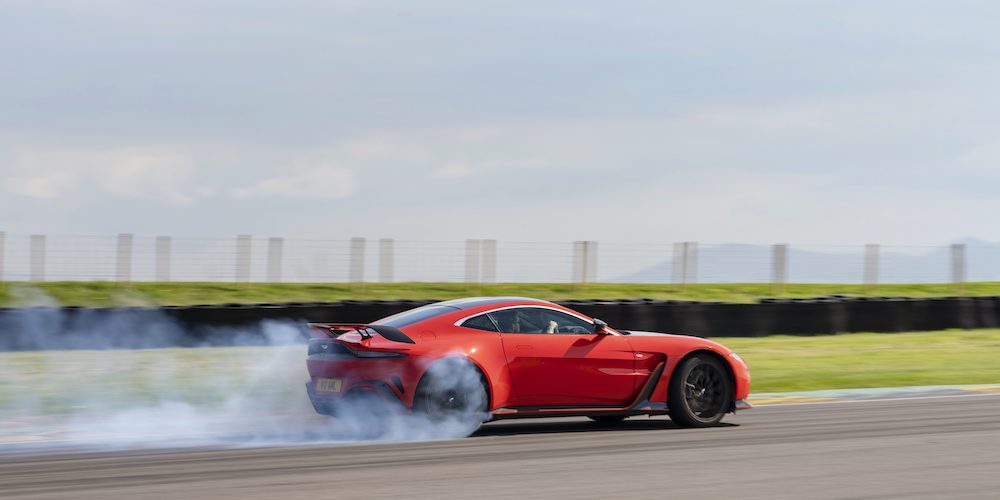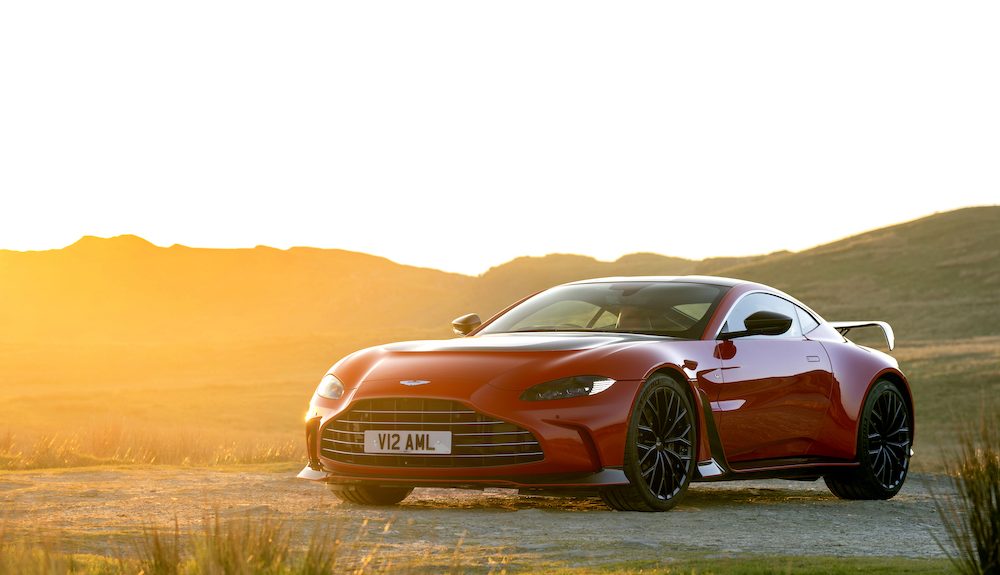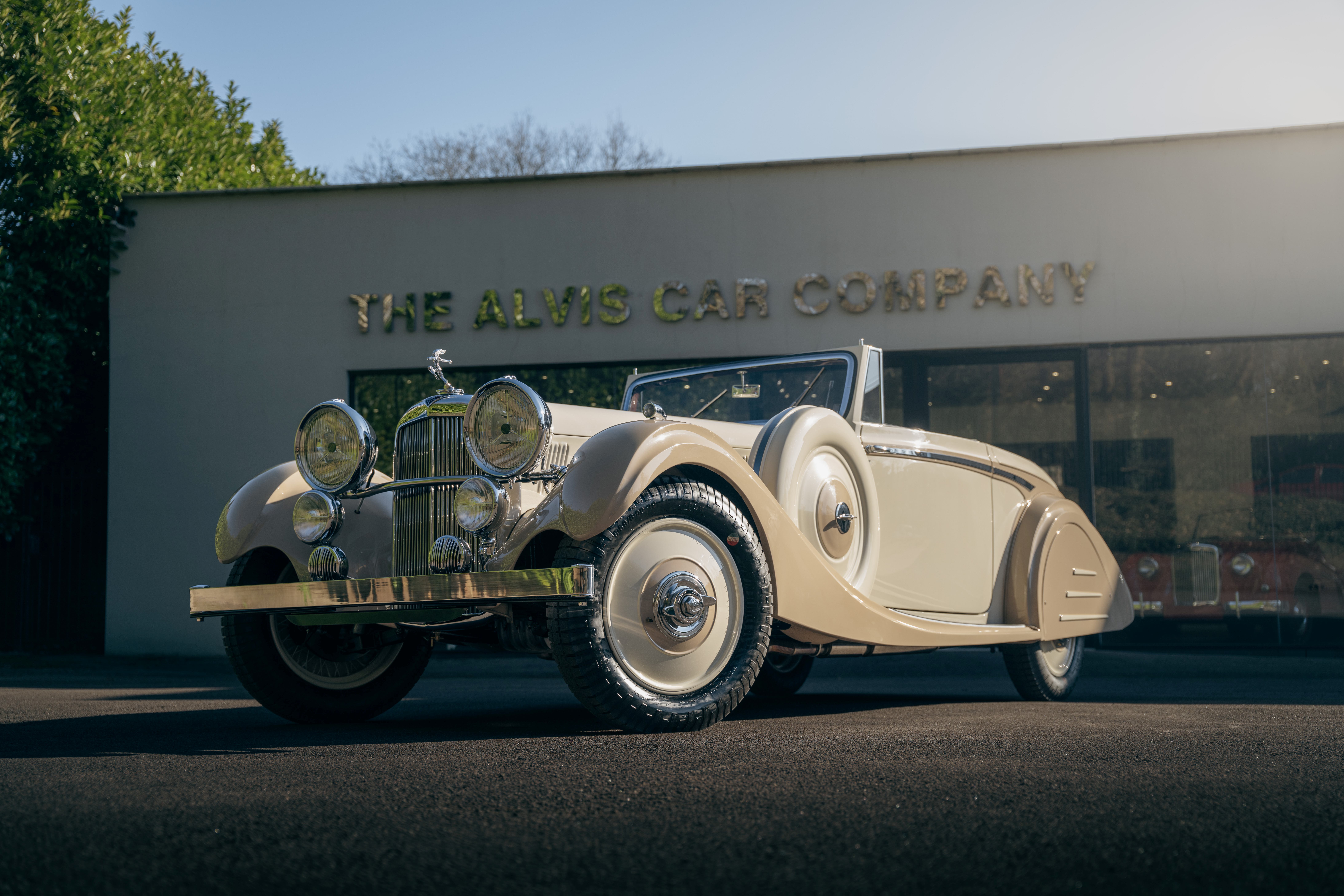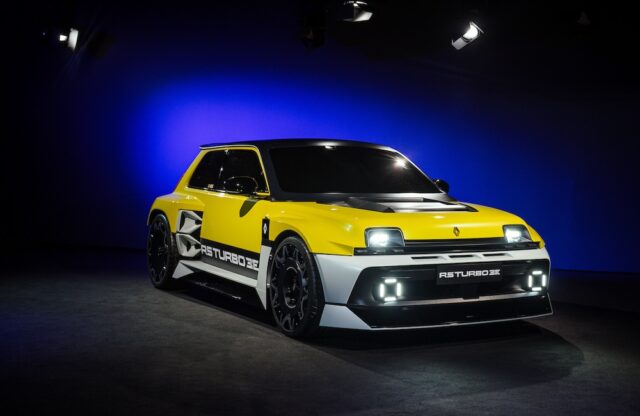Words: David Lillywhite | Photography: Max Earey
Aston Martin’s V12 Vantage was always the company’s hot rod, with the story – apocryphal or not – going that engineers sneakily squeezed the V12 into the V8 Vantage’s already tight engine bay out of hours.
As with the Cobra, the Sunbeam Tiger and countless back-street and home-made specials of yore, the first 510bhp V12 Vantage felt satisfyingly overwhelmed by the power of its new engine. But that was back in 2009. The faster, better-equipped but harder-riding 565bhp V12 Vantage S followed in 2013.
By 2018 it was gone, much missed, to the point that the V12 Vantage is one of the most collectible of modern-era Aston Martins.
Then, in late 2021, Aston Martin announced that it would make one last version of a V12-powered V8 Vantage, taking the latest-generation chassis and squeezing in the Mercedes AMG twin-turbo 690bhp 5.2-litre quad-cam V12 and ZF eight-speed automatic transmission – made easier because this combination had already been used in the limited-edition V12 Speedster.
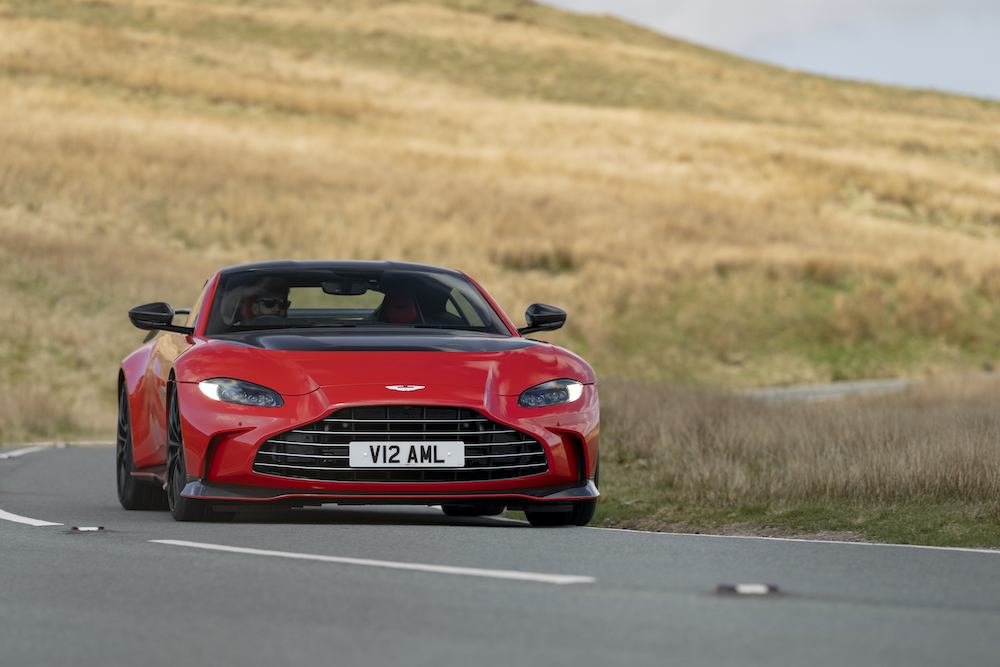
Just 333 will be produced – and they all pre-sold immediately, at £265,000 each. That’s over £100,000 pricier than the V8 Vantage, in case you were wondering.
Now the first cars are being delivered, and we spent the day with one in north Wales, first on the widely varied roads of Snowdonia and then on the wonderfully challenging Anglesey Circuit.
First impressions? It looks lairy and aggressive, an Aston Martin for someone who’d buy a GT3 911 but wouldn’t be quite comfortable with a Lamborghini. At least some of the emphasis on weight saving is clear from the test car, which wears its carbonfibre clamshell bonnet, roof, side sills, front bumper, rear diffuser, spoiler and deck lid with pride. The front wings, too, are carbonfibre. Under the skin there’s more kilo counting, although extra bracing means the shell is stiffer than the V8 Vantage’s.
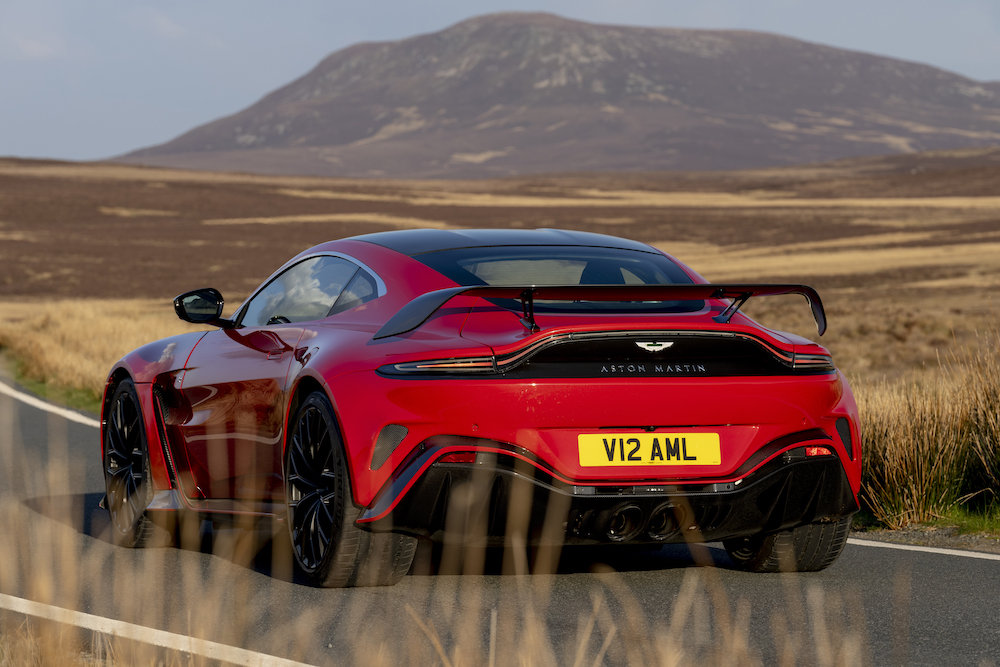
The exposed carbonfibre parts can be treated to special lacquers and tints, although personally I’d play them down and make it all a little less obvious. I’d leave the conspicuous bit to the lightweight twin-exit exhaust system, which sounds phenomenal despite the muting effects of the twin turbos.
Start it up, and there’s Aston Martin’s party trick exhaust ‘flare’, a meaty roar that schoolkids will love rather more than the curtain-twitching neighbours do. The ZF transmission is familiar territory, although reprogrammed for the V12 Vantage to match the engine and for lightning fast shifts. Use it on the paddles or let it do its own thing on the road, and it will never disappoint.
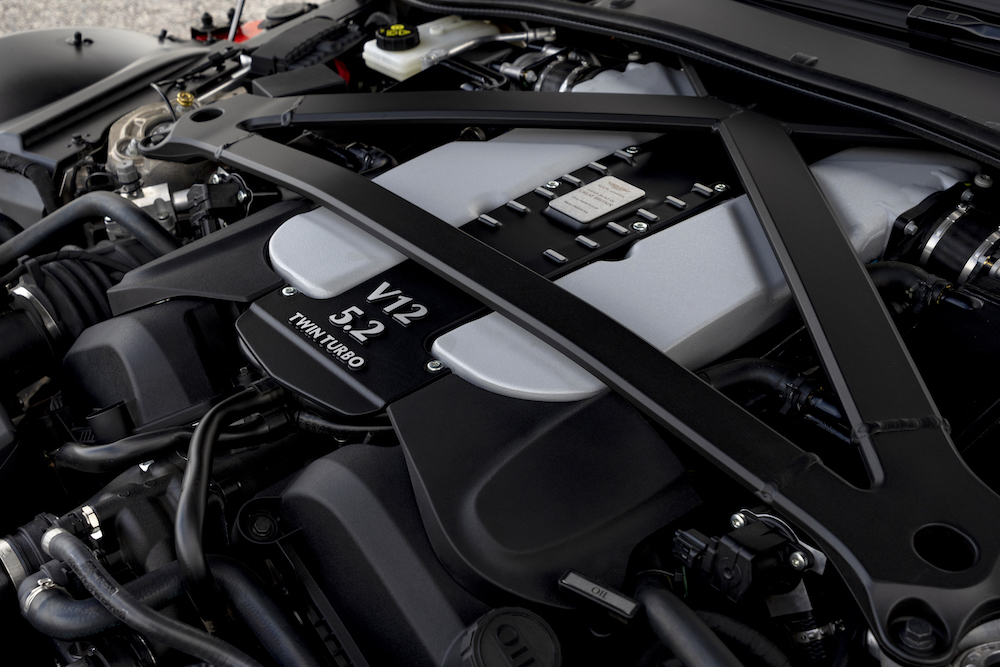
The engine, too, gives monstrously strong delivery, as muscle-bound and torquey as you’d ever want, but when you gun it the car takes off.
And, wait, is there a hint of that on-the-edge-of-adhesion squirminess that we so loved about the 2009 original? There surely is! Despite, ironically, not being significantly faster in acceleration than the fastest-available V8 Vantages that the V12 is based upon – 0-60mph in 3.4 seconds (and 200mph) instead of the V8 Vantage F1 Edition’s 3.6 seconds – there’s a feeling of unfettered power here that no other production Aston Martins manages. After all, this is the most powerful engine in its shortest chassis. What’s not to like about that?
There’s a compromise, though, and that’s to the ride, because to keep all this power in check the suspension has been firmed up significantly over the V8 Vantage. The front spring rates are up by 50 percent, the rears by 40 percent, while the front anti-roll bar is 5 percent stiffer and the rear 41 percent softer. Why’s that last figure so different? To compensate for the extra weight at the front and dial out the understeer that the bigger engine would otherwise cause.

The suspension tuning seems to have worked in that respect, because the steering is quick and responsive and there’s no feeling of the engine weight pushing the car straight on in corners. But… the ride is firm in the extreme, despite secondary rear ‘tender’ springs intended to improve comfort and Aston Martin’s well proven adaptive dampers. Combined with the optional weight-saving carbon seats in the test car, it wasn’t long before backache set in on the twisty, bumpy roads that thread through Snowdonia’s awe-inspiring scenery.
After several hours of that, it was back to Anglesey for some track time. Relearning the lines and building up the confidence to attack the famous Rocket blind corner, the V12 Vantage was best left in automatic mode. Once it was pushed harder, the paddles were by far the better option, avoiding those awkward situations where the gearbox attempts a change mid-corner with the car already near the limit.
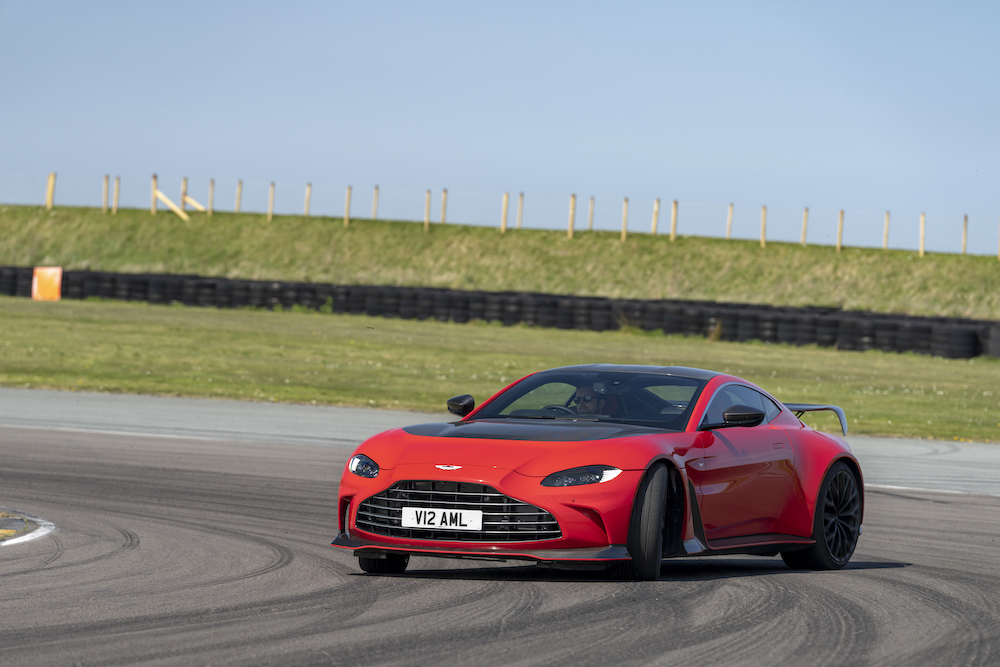
As a track car, the V12 Vantage proves itself admirably, feeling precise and agile, ready to steer on the throttle without reverting to debilitating understeer. The carbon-ceramic brakes, occasionally lacking in feel and often noisy on the road, come into their own when worked hard, and the suspension feels as good as any road car’s will feel on a track.
The 2013 V12 Vantage S was a bit like this, much more so than the first V12 Vantage: hard riding and uncompromised on the road, it could run rings around its predecessor on the track. Me? I’d prefer a modern-day version of the original, a little softer and with less in-yer-face styling, but still exhibiting the bad behaviour that the first variant had in spades.
But things have moved on. The first V8 Vantage never felt seriously quick; the current one really is. So the new V12 Vantage had to be at another level. Which it also really is – and while I’m still saddened that we won’t see another, I’m pleased that this one exists, flaws and all.
